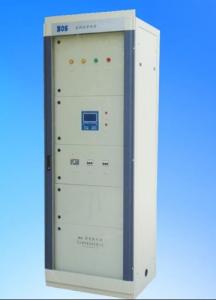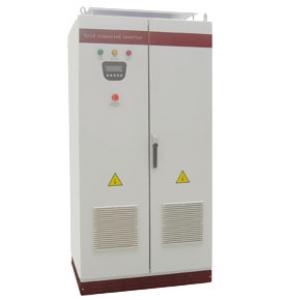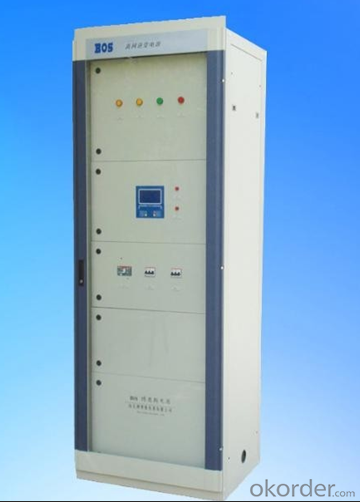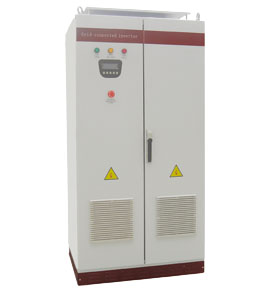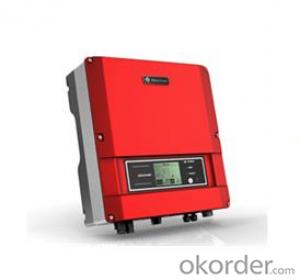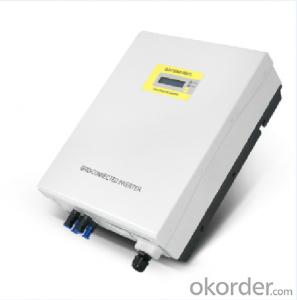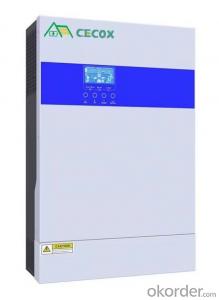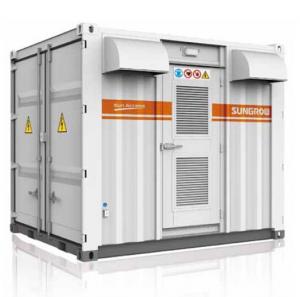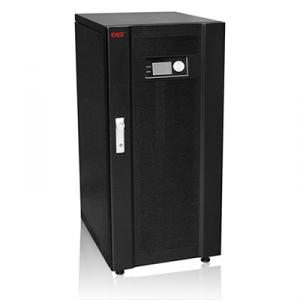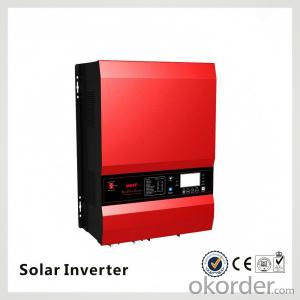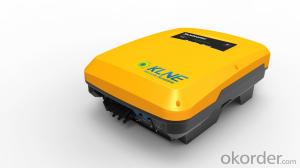48 Volt Solar Inverter PV On-Grid Solar Inverter 12V 220V 5000Watt with MPPT
OKorder Service Pledge
OKorder Financial Service
You Might Also Like
Description:
CNBMSOLAR is a world-leading and Vertical integrated manufacturer of high-performance with Silicon,
Wafer, Cells, Modules, which convert sunlight into electricity for residential, commercial, and utility-scale
power generation.
The capacity of CNBMSOLAR is reach to 1GW, and make sure each year our shipment capacity is more
Than 700-800MWs, at the same time, we have set up the largest solar power station with our partner
in Ukraine.
CNBM is a Quality + Service oriented company with“Excellence at Each Step” approach, composed of
the finest components from TUV and IEC-certified partners around the world, CNBM modules consistently
undergo a variety of trials at the company’s Test & Development Centre, ensuring peak performance
capabilities. The company is committed to develop and provide the world with clean and renewable energy
to ease the energy shortages as well as human kind’s impact on the environment
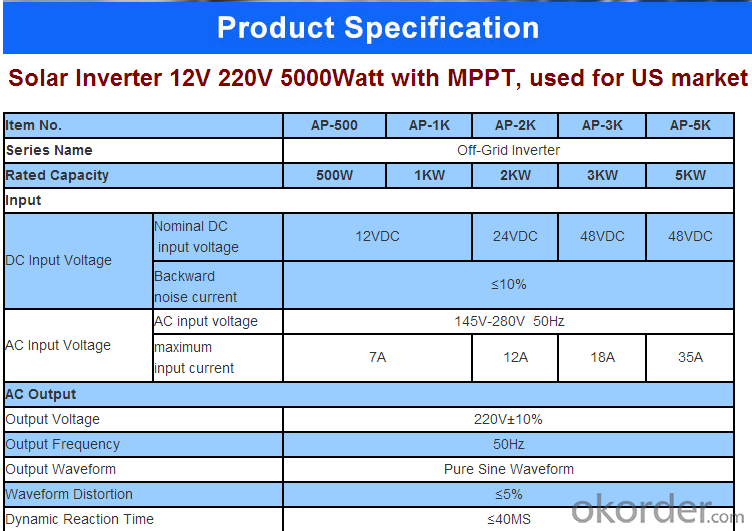
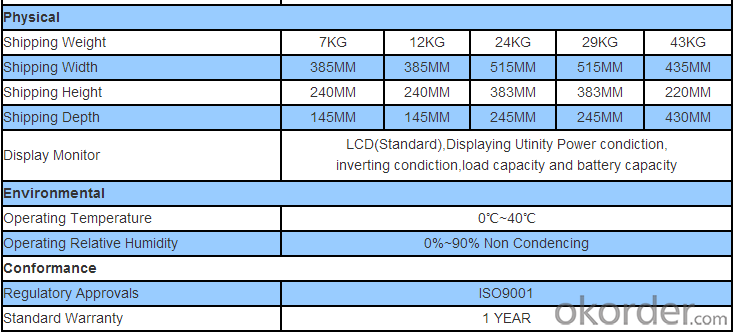
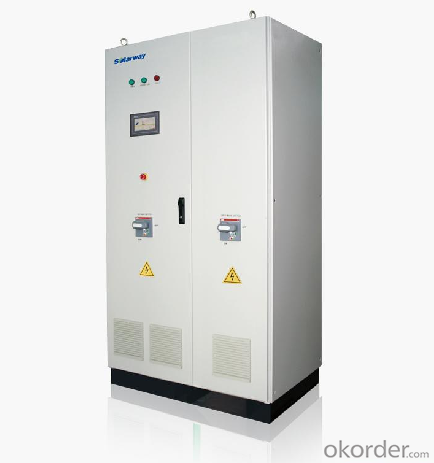
FAQ:What's your products feature?
1. Pure sine wave Output, applicable in various field
2. More stable, safer industrial online system
3. CPU with dual core, Better performance.
4. Availability of wide range of input voltage, AVR available
5. Protection against overload, short circuit, over/lower voltage, over-heat
6. LED+LCD display, evident showing
7. Extended batteries group available for prolonging back-up time
8. Intelligent battery management with over-charge and over-discharge protection
9. Temperature controller adjusting cooling ventilation, reducing noise
10. High efficiency of transferring, diminishing energy loss, increasing stability
- Q: How does the input current rating affect the performance of a solar inverter?
- The input current rating of a solar inverter directly affects its performance as it determines the maximum amount of current that the inverter can handle from the solar panels. If the input current rating is too low, it may not be able to handle the full power output of the solar panels, leading to inefficiency and potential damage to the inverter. On the other hand, if the input current rating is too high, it may be overkill for the system, resulting in unnecessary costs. Therefore, selecting an appropriate input current rating is crucial for optimal performance and longevity of a solar inverter.
- Q: How does a solar inverter handle anti-islanding protection?
- A solar inverter handles anti-islanding protection by continuously monitoring the grid's voltage and frequency. If the grid's voltage or frequency deviates from the predetermined range, indicating a potential islanding condition, the inverter quickly disconnects from the grid to prevent energy flow. This ensures the safety of utility workers and prevents damage to the electrical grid.
- Q: Photovoltaic grid-connected inverter without DC emc how will happen
- by means of energy converters can be converted into electrical energy. The process of converting light energy directly into electrical energy is precisely the response to photovoltaic effects. Without the need for any other mechanical parts, the energy in
- Q: How does a grid-tied solar inverter work?
- A grid-tied solar inverter converts the direct current (DC) electricity generated by solar panels into alternating current (AC) electricity that can be fed into the electrical grid. It synchronizes the solar panel's electricity with the utility grid's electricity, allowing the excess power to be sent back to the grid or drawing power from the grid when the solar panels are not producing enough. The inverter also ensures the safety and reliability of the system by monitoring the grid's voltage and frequency, and disconnecting in case of grid failure to protect workers and prevent damage to the system.
- Q: Does a solar inverter require any additional cooling or ventilation?
- Yes, a solar inverter typically requires additional cooling or ventilation to operate efficiently and prevent overheating. The heat generated during the conversion of DC to AC power needs to be dissipated to maintain optimal performance and prolong the lifespan of the inverter.
- Q: Can a solar inverter be used in areas with unstable grid connections?
- Yes, a solar inverter can be used in areas with unstable grid connections. Solar inverters are designed to convert the DC power generated by solar panels into usable AC power for consumption or to be fed back into the grid. In areas with unstable grid connections, solar inverters can still function and provide power by utilizing battery storage systems or operating in off-grid mode. This allows for uninterrupted power supply and provides stability in areas with unreliable grid connections.
- Q: How does a solar inverter communicate with monitoring systems?
- A solar inverter communicates with monitoring systems through various means such as wireless technologies like Wi-Fi, Bluetooth, or Zigbee, or through wired connections like Ethernet or RS485. These communication channels allow the inverter to transmit important data and performance metrics to the monitoring systems in real-time.
- Q: What are the key considerations for selecting a reliable solar inverter manufacturer?
- When selecting a reliable solar inverter manufacturer, there are several key considerations to keep in mind. First and foremost, it is important to evaluate the manufacturer's reputation and experience in the industry. Look for manufacturers with a proven track record of producing high-quality, reliable inverters. Another crucial factor is the warranty offered by the manufacturer. A reliable manufacturer will provide a comprehensive warranty that covers both the product and its performance over a reasonable period of time. This ensures that any potential issues with the inverter can be addressed and resolved without incurring additional costs. The technical specifications and features of the inverters should also be carefully assessed. Consider factors such as efficiency, reliability, and compatibility with your specific solar panel system. Look for inverters that are capable of effectively converting solar energy into usable electricity while maintaining stable performance in various weather conditions. Furthermore, it is advisable to consider the after-sales support and customer service provided by the manufacturer. A reliable manufacturer will have a responsive and knowledgeable customer support team that can assist with any queries or technical issues that may arise after the installation of the inverter. Lastly, it is beneficial to research and compare reviews and feedback from other customers who have used the manufacturer's inverters. This can provide valuable insights into the overall satisfaction and reliability of the products. By carefully considering these key factors, you can select a reliable solar inverter manufacturer that meets your specific requirements and ensures long-term performance and satisfaction.
- Q: Generally a large grid-connected photovoltaic power plant will have several inverters
- Inverter, a single failure, does not affect other operations, the impact on the grid is small, high reliability.
- Q: How does a solar inverter communicate with other system components?
- A solar inverter communicates with other system components through various methods such as wired connections, wireless technologies, and communication protocols. It can be connected to the energy management system or smart grid through Ethernet cables or Wi-Fi for data exchange and control. Additionally, it may use communication protocols like Modbus or SunSpec to transmit information to monitoring devices, batteries, or other renewable energy sources within the system.
Send your message to us
48 Volt Solar Inverter PV On-Grid Solar Inverter 12V 220V 5000Watt with MPPT
OKorder Service Pledge
OKorder Financial Service
Similar products
Hot products
Hot Searches
Related keywords
